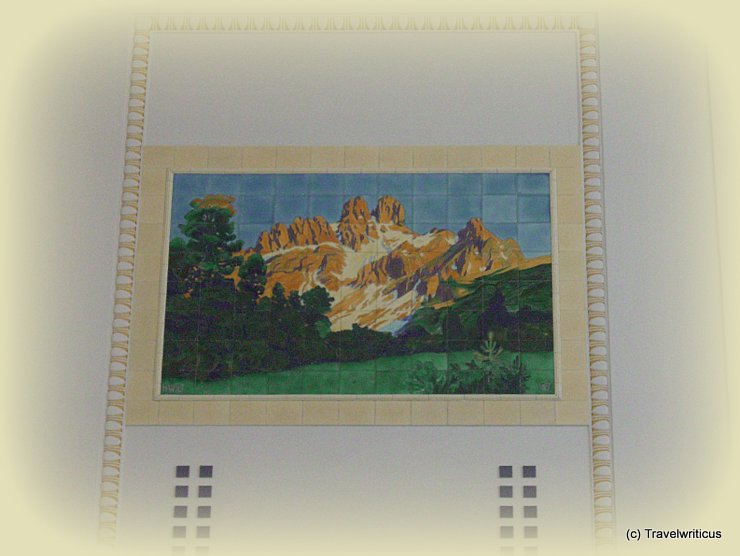
One of the architectural highlights of the renewed Salzburg Central Station is the rediscovered tile art in the style of Art Nouveau. These works were created by artists like Otto Barth, Hans Prutscher, Hans Wilt and Hubert von Zwickle. [German]
You only see what you know (Goethe)

One of the architectural highlights of the renewed Salzburg Central Station is the rediscovered tile art in the style of Art Nouveau. These works were created by artists like Otto Barth, Hans Prutscher, Hans Wilt and Hubert von Zwickle. [German]
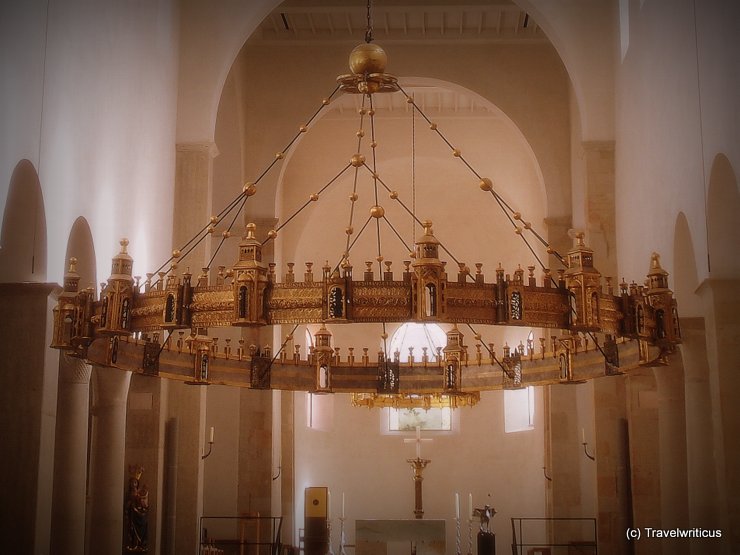
The Hezilo Chandelier in the Hildesheim Cathedral is a medieval circle-candlestick which measures stunning 6 metres in diameter. Its name origins from Bishop Hezilo of Hildesheim, who commissioned the chandelier in the 11th century.

There are many cities with preserved town walls. Modern cities surrounded by an equally well-preserved moat are rarer. A fine example of such a combination forms the city wall and moat of Friesach, a place in the Austrian state of Carinthia. [German]

In the streets of Constance (Konstanz), I came across this depiction of a three-headed peacock. Each head wore a tiara. What is the meaning of this strange combination? It is an allusion to the Three Popes Controversy.

The double spiral staircase of Graz is an architectural element in the former town castle (Grazer Burg). It dates back to around 1500. That way, it is considered the second oldest spiral staircase of its kind.
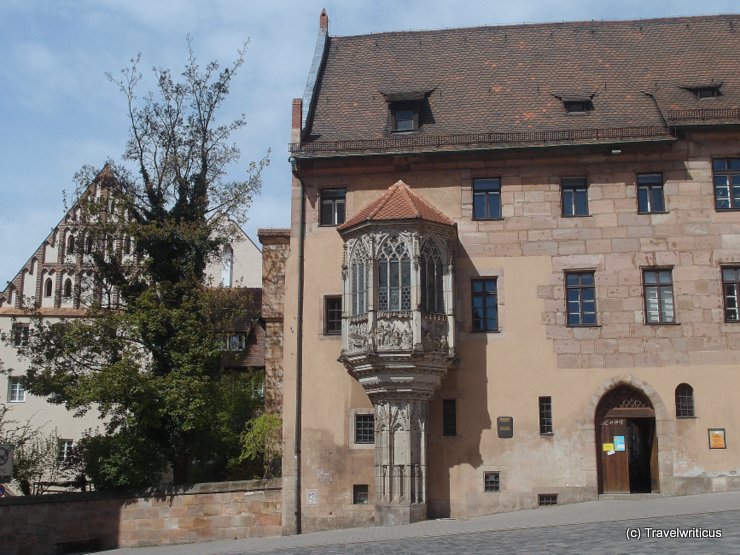
The Nürnberger Chörlein is an architectural peculiarity in the old town of Nuremberg. These oriels artfully protrude from the upper floor of the houses onto the street and look like elite box seats. [German]
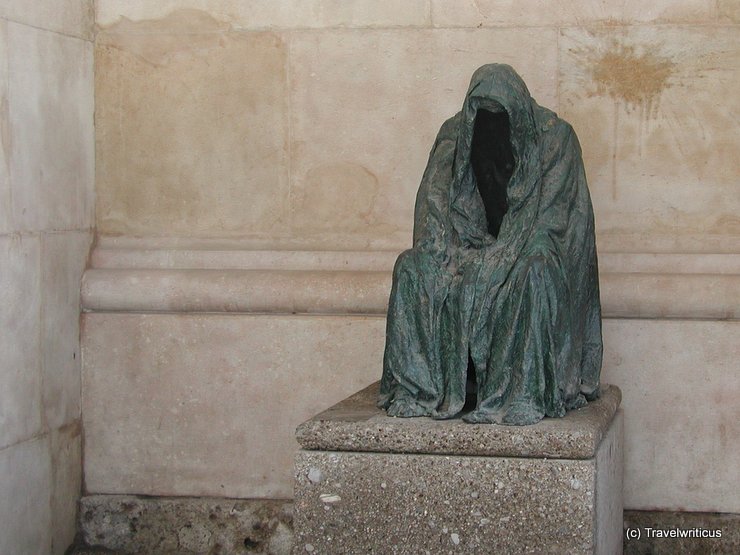
In 1999 a strange figurine appeared in the city of Salzburg. It had chosen a prominent place under the Cathedral Archway between Domplatz and Kapitelplatz: The sculpture “Pietá” by Czech painter and sculptor Anna Chromy. [German]
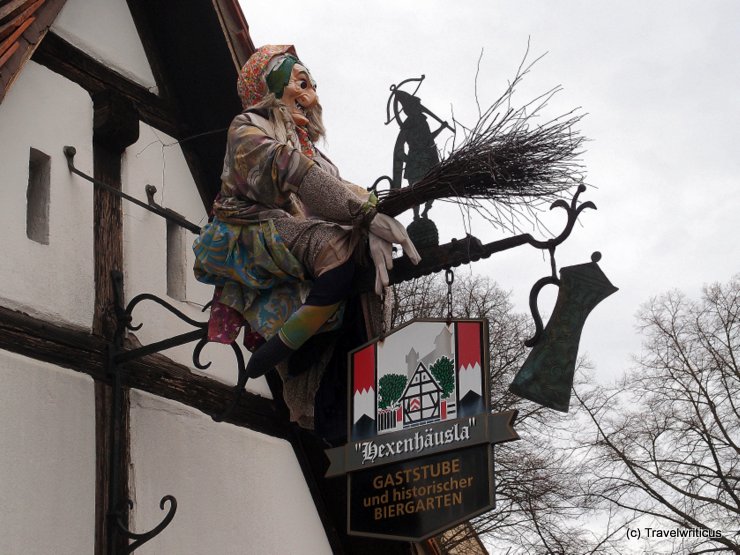
At first glance, this inn sign in Nuremberg didn’t seem special. But then I discovered the silhouette of a man wearing a crossbow right behind the dull-looking puppet of a witch. Locals told me this symbolizes a honey hunter.
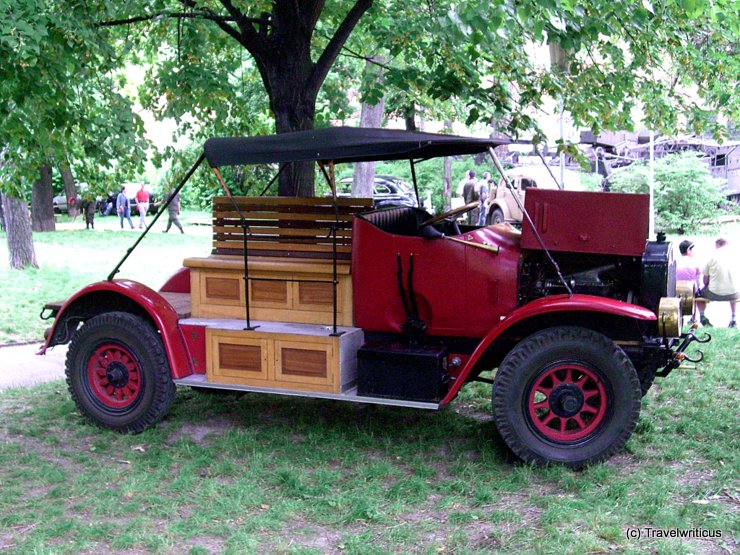
I took this photo at an annual meeting of classic cars hosted by the Museum of Military History in Vienna. It shows a still-running automobile built by the Czech company Praga in 1914. A board told me the truck might have carried a floodlight of the Austro-Hungarian army during World War I.
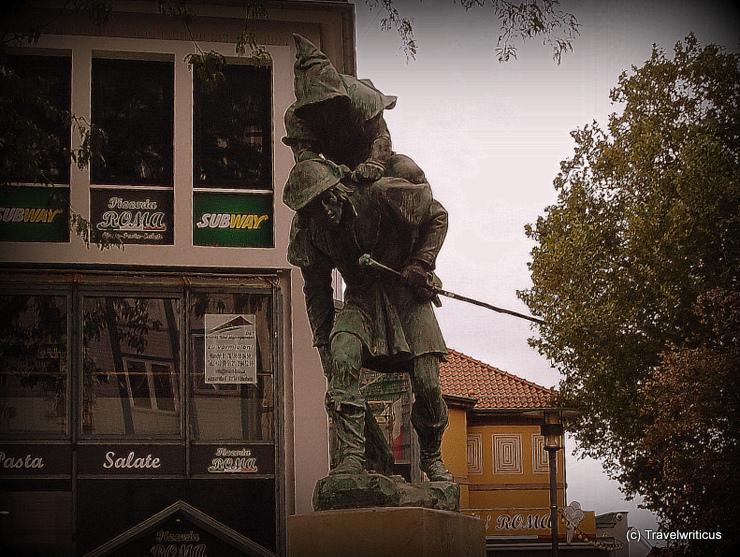
At the southern end of Hildesheim’s pedestrian area, I came across a Huckup. The Aufhocker had found its victim in the person of a young thief of apples. But both are just a sculpture created by Carl Röder. [German]
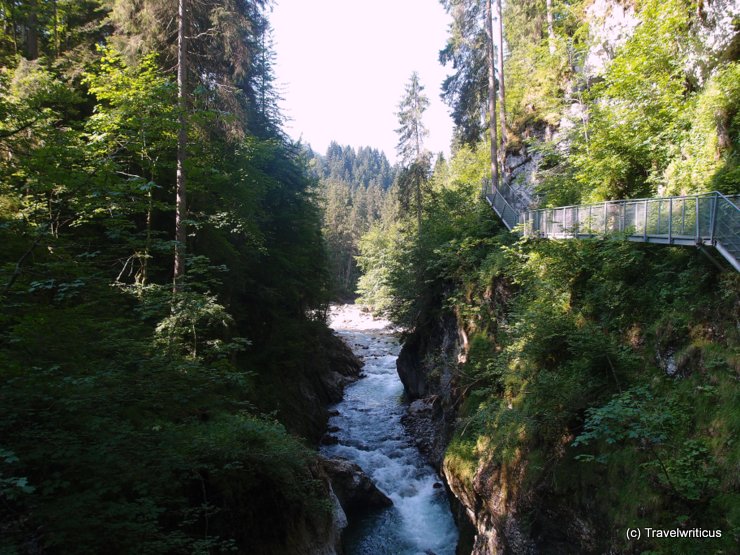
The Breitachklamm is a gorge located in Allgäu next to the border between Germany and Austria. On the German end of the ravine, there is a helpful exhibition hall explaining the different parts of the gorge and how such a gorge comes into being.
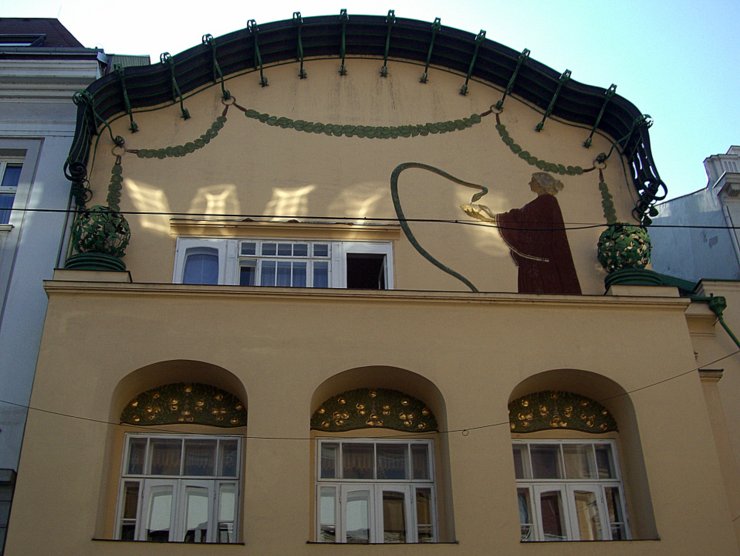
Near St. Pölten Central Station, my eyes fell on a building with a remarkable facade. A snake swooped up towards a woman. I stood before the Haus Stöhr, also known as Olbrich house. [German]